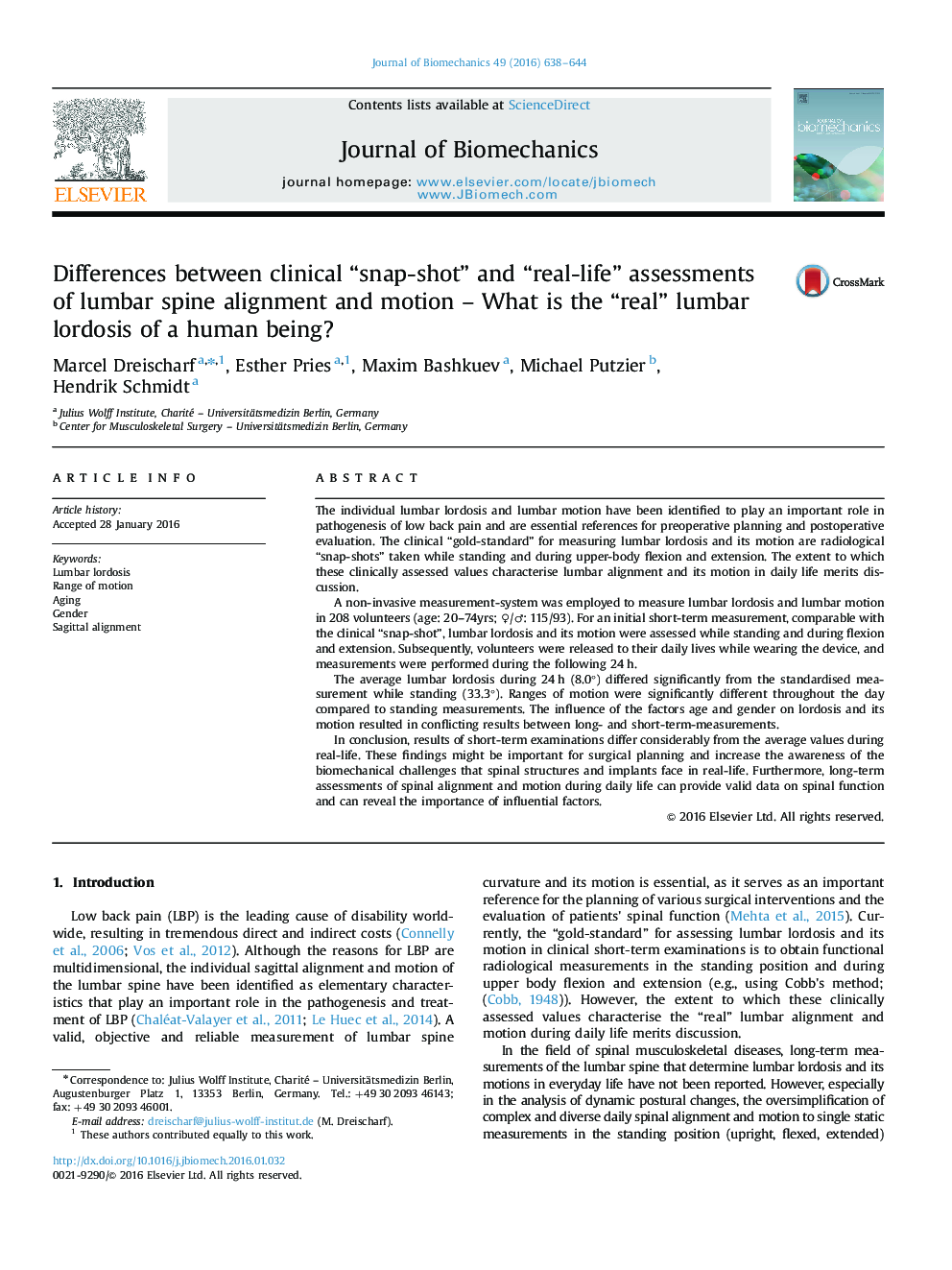| Article ID | Journal | Published Year | Pages | File Type |
|---|---|---|---|---|
| 871884 | Journal of Biomechanics | 2016 | 7 Pages |
The individual lumbar lordosis and lumbar motion have been identified to play an important role in pathogenesis of low back pain and are essential references for preoperative planning and postoperative evaluation. The clinical “gold-standard” for measuring lumbar lordosis and its motion are radiological “snap-shots” taken while standing and during upper-body flexion and extension. The extent to which these clinically assessed values characterise lumbar alignment and its motion in daily life merits discussion.A non-invasive measurement-system was employed to measure lumbar lordosis and lumbar motion in 208 volunteers (age: 20–74yrs; ♀/♂: 115/93). For an initial short-term measurement, comparable with the clinical “snap-shot”, lumbar lordosis and its motion were assessed while standing and during flexion and extension. Subsequently, volunteers were released to their daily lives while wearing the device, and measurements were performed during the following 24 h.The average lumbar lordosis during 24 h (8.0°) differed significantly from the standardised measurement while standing (33.3°). Ranges of motion were significantly different throughout the day compared to standing measurements. The influence of the factors age and gender on lordosis and its motion resulted in conflicting results between long- and short-term-measurements.In conclusion, results of short-term examinations differ considerably from the average values during real-life. These findings might be important for surgical planning and increase the awareness of the biomechanical challenges that spinal structures and implants face in real-life. Furthermore, long-term assessments of spinal alignment and motion during daily life can provide valid data on spinal function and can reveal the importance of influential factors.
